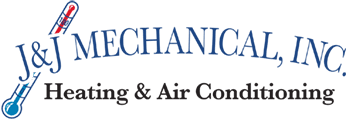What Parts Make Up Your All-Important HVAC System?
HVAC system in your Kinston, North Carolina home is a complex, interrelated system of parts that work together to provide heating, cooling, and even humidity control for your indoor living spaces. Here is a brief guide to the parts of the HVAC system and what you can expect each of them to do.
Your HVAC System Defined
HVAC stands for heating, ventilation, and air conditioning. Sometimes refrigeration is included in the definition, resulting in the abbreviation HVAC/R. In general, HVAC systems refer to the furnaces, heat pumps, air conditioners, and boilers that produce seasonal heating and cooling for homes and commercial facilities.
Parts of the HVAC System
Not every HVAC system contains all of the following components, but these are the most common parts of the HVAC system that you are likely to encounter when choosing, installing, or taking care of a home heating or cooling system.
-
The indoor and outdoor units: Heat pumps and central air conditioners each have an indoor and outdoor unit. These large cabinets house many of the components found on this list and contain other important items such as system controls, refrigerant lines, electrical wiring, and connectors. These two types of HVAC systems work on a concept of refrigeration that moves heat from place to place, taking it away from where it’s not wanted and moving it to places where it’s needed. A heat pump, for example, captures heat using a refrigerant solution that circulates between the indoor and outdoor units. As the refrigeration moves through the lines, it changes from a liquid to a gas and back again. When the refrigerant evaporates into a gas, it absorbs heat. When the gaseous refrigerant is condensed back to liquid form, it releases the heat it contains. In this way, heat is captured and moved between the two units. Fuel-burning and electric furnaces are usually self-contained units that have only an indoor unit. Heat is produced in this unit either from the burning of fuel, such as natural gas or from the warming of electric heating coils within the unit.
-
Air handler: The air handler is the powerful fan that forces heated or cooled air into the ductwork and out at vents throughout your home. It is responsible for distributing the conditioned air produced by your HVAC system.
-
Heat exchanger: The heat exchanger is a device that transfers heat produced by your HVAC system to air that will be sent into your home to provide heating or sent out of your home to provide cooling.
-
Refrigerant lines: The refrigerant lines contain the refrigerant that changes state to either absorb or release heat. The lines are connected between the indoor and outdoor units of your HVAC system and move between the evaporator coil and the condenser. They are usually made of aluminum or copper and are designed to withstand high heat and tough operating conditions.
-
Evaporator coil: The evaporator coil is the component in which liquid refrigerant is converted to gas for heat capture. Heat pumps can evaporate refrigerant in either the indoor or outdoor unit. Fuel-burning or electric furnaces do not contain evaporator coils.
-
Condenser: The condenser is responsible for turning hot gaseous refrigerant back to its liquid state, extracting the heat it contains in the process. Again, heat pumps can condense refrigerant in both indoor and outdoor units. There are no condensers in fuel-burning or electric furnaces.
-
Ductwork: The ductwork is the network of large pipes that provides the pathway for heated or cooled air to move from your HVAC system to the inside of your home. Ducts are connected to vents in your home’s walls, floors, or ceilings, where conditioned air exits. Ductwork sections should be fitted together tightly and all connections sealed to prevent loss of conditioned air.
-
Thermostat: The thermostat is the main control unit for the HVAC system. It is where you make adjustments to settings to receive either more heating or cooling for your indoor spaces. The thermostat senses changes in indoor temperatures and either starts or stops the HVAC system in response. Programmable thermostats provide even more extensive levels of control and support high-efficiency HVAC operation.
J & J Mechanical, Inc. provides HVAC installation, and repair, maintenance services to customers in Greenville, Kinston, and New Bern. We can provide you with the energy-efficient HVAC systems you need for optimum heating and cooling for your home and office. Call us today!
Image provided by Shutterstock

